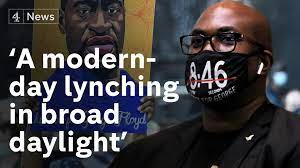CURRENT AFFAIRS
Get the most updated and recent current affair content on Padhaikaro.com
Daylight lynching and law to prevent it:
- IAS NEXT, Lucknow
- 18, Oct 2021

The recent lynching of a man at Singhu, at the site of the farmers’ protest on the Delhi-Haryana border, the brutality of the hate crime captured and replayed on video, calls for the full force of the law to step in, to bring swift and sure punishment to the guilty.
What happened?
The victim, Lakhbir Singh, an SC labourer who belonged to a village in Tarn Taran, was reportedly accused of an act of beadabi or desecration by his killers, allegedly a group of Nihangs, who tortured him and tied the mutilated body to a police barricade.
What needs to be done now?
Thugs and lumpens should not be allowed to find any cover. They have played judge, jury, executioner, and the state must urgently identify them and bring them to book.
What is meant by Lynching ?
Any act or series of acts of violence or aiding, abetting (encouraging) such act/acts thereof, whether spontaneous or planned, by a mob on the grounds of religion, race, caste, sex, place of birth, language, dietary practices, sexual orientation, political affiliation, ethnicity or any other related grounds.
How are these cases handled?
There is “no separate” definition for such incidents under the existing IPC. Lynching incidents can be dealt with under Section 300 and 302 of IPC.
- Section 302 provides that whoever commits murder shall be punished with death or imprisonment for life and shall also be liable to fine. Offence of murder is a cognisable, non- bailable and non-compoundable offence.
SC guidelines:
- There should be a “separate offence” for lynching and the trial courts must ordinarily award maximum sentence upon conviction of the accused person to set a stern example in cases of mob violence.
- The state governments will have to designate a senior police officer in each district for taking measures to prevent incidents of mob violence and lynching.
- The state governments need to identify districts, sub-divisions and villageswhere instances of lynching and mob violence have been reported in the recent past.
- The nodal officers shall bring to the notice of the DGP about any inter-district co-ordination issues for devising a strategy to tackle lynching and mob violence related issues.
- Every police officer shall ensure to disperse the mob that has a tendency to cause violence in the disguise of vigilantism or otherwise.
- Central and the state governments shall broadcast on radio, television and other media platforms about the serious consequences of mob lynching and mob violence.
- Despite the measures taken by the State Police, if it comes to the notice of the local police that an incident of lynching or mob violence has taken place, the jurisdictional police station shall immediately lodge an FIR.
- The State Governments shall prepare a lynching/mob violence victim compensation scheme in the light of the provisions of Section 357A of CrPC.
- If a police officer or an officer of the district administration fails to fulfill his duty, it will be considered an act of deliberate negligence.
Need of the hour:
- Every time there is a case of honor killing, hate crimes, witch hunting or mob lynching we raise demands for special legislation to deal with these crimes.
- But, the fact is that these crimes are nothing but murders and the existing provisions under IPC and CrPC are sufficient to deal with such crimes.
- Coupled with the guidelines laid down in Poonawala’s case, we are sufficiently equipped to deal with mob lynching. However, what we lack is due enforcement of the existing laws and accountability of the enforcement agencies.
Attempts by various states in this regard:
- Manipur government came up first with its Bill against lynching in 2018, incorporating some logical and relevant clauses.
- Rajasthan government passed a bill against lynching in August 2019.
- West Bengal too came up with a more stringent Bill against lynching.